Bulk Pricing
7 Port USB 3.2 Gen 2 Type-C Hub w/ ESD Surge Protection
Industrial Grade | +7~24V DC Input | Surface Mountable | 10 Gbps | Screw Lock
- Protect Your Equipment: The 7-port Type-C hub supports 15KV ESD surge protection for each port to keep your connected peripherals safe from harm.
- Super Fast Speeds: This USB hub is 3.2 Gen 2 compliant, ensuring super-fast 10Gbps data transfer speeds. It supports super speed +, high speed and full speed which enables it to be compatible with USB 3.2 Gen 1 / 2.0 / 1.1.
- Superior Build Quality: Housed in a rugged steel chassis with built in mountable flanges, the 7-port hub is perfect for workstations installations in offices, labs, warehouses, and other industrial applications.
- Upstream: 1 USB port, Type C connector, Screw-lock type
- Downstream: 4 USB ports, Type C connectors, Screw-lock type & 3 USB ports, Type A connectors, Screw-lock type
- Power Connector: 2-Pin Terminal Block, DC Barrel 2.5mm ID × 5.5mm OD
- LED Indicators: 7 LEDs for each downstream port to indicate the current bus
- Mounting Options: Wall & Surface
Product Documents
Quick Links:
Description
Introducing the 7-Port USB Type-C Hub for Industrial Applications
Enhance your connectivity with the Coolgear 7-Port USB Type-C Hub, engineered for reliable performance in industrial environments. This hub offers high-speed data transfer and power delivery, supporting up to 7 USB devices simultaneously. Whether you need to expand your workspace or streamline multiple device management, this hub provides robust, versatile connectivity for demanding setups.
The CG-7P4C3A provides a unique self-powered mode to work with wide range ( 7~24V DC) input DC power from its terminal blocks and DC jack connectors. It supports fast USB charging specifications by turning its downstream ports from a Standard Downstream Port (SDP) into Charging Downstream Port (CDP) or Dedicated Charging Ports (DCP). It also supports Vendor Specific Charging Modes e.g. Apple 2.4A, Samsung, etc.
Key Features and Benefits
- 7-Port Expansion: Connect up to 4 USB 3.2 Gen 2 Type-C devices and 3 USB Type-A devices to the host system.
- High-Power Delivery: Each port supports up to 2.4A max, allowing simultaneous charging and data transfers.
- Multiple Charging Protocols: Supports Apple 2.4A, BC 1.2, and Samsung fast charging for a wide range of devices.
- Flexible Power Options: Features a 2-Pin terminal block, DC barrel jack, and included AC adapter for versatile power configurations.
- Rugged Build: Built with industrial-grade durability, the hub is housed in a sturdy metal case, ensuring longevity in challenging environments.
- Wide Compatibility: Compatible with Windows, Linux, and Mac OS for seamless integration across various operating systems.
- Efficient Energy Management: Idle consumption as low as 51mA with terminal power and efficient operation to minimize power waste.
Package Contents:
- 7 Port USB 3.2 Gen 2 Type-C Hub w/ ESD Surge Protection
- US Type-C to Screw Lock Type-C Cable
- Power Adapter
- Power Cable
*Surface Mounting screws not included.
Use Cases
Use Cases:
Industrial Automation
- Machine Integration: Manage multiple connected devices, such as sensors and control systems, with stable data transfer and power delivery.
- Durable and Reliable: Built to withstand harsh industrial conditions, perfect for long-term deployments in automation environments.
Research Labs
- Data Logging: Connect lab equipment like data loggers, microscopes, and other test instruments to central systems seamlessly.
- Secure Data Transfer: Ensure fast and reliable data transfers for high-precision research setups.
Education & Training Facilities
- Collaborative Learning: Power multiple devices in a classroom or training environment for seamless educational experiences.
- Lab Equipment Setup: Ideal for managing and synchronizing devices in computer labs or tech-training spaces.
Office Workstations
- Multiple Device Management: Connect and charge multiple peripherals such as keyboards, mice, external drives, and mobile devices.
Quick Specs
Quick Specs
- Compliant with USB 3.2 Gen 2 Specifications
- 1 upstream USB-C and 7 downstream (4 x USB-C + 3 x USB-A) connectors
- Each Port Supports 15KV (air) ESD Surge Protection
- Supports Type-C and Type-A Screw-Lock Cables
- Detects Type-C Flip-able/Reversible Plugging
- Supports 10Gbps (SS+), 5Gbps (SS)480Mbps (HS), 12Mbps (FS) and 1.5Mbps (LS) Speed
- Multi Transaction Translators (TT) per Hub
- Built-in Port Link Status Indicator LED for Each Port
- Supports Wide Range (+7~24V DC) Self-power Input
- Supports BC 1.2: SDP, CDP and DCP modes
- Supports Vendor Specific Charging Modes e.g. Apple 2.4A, Samsung, etc.
- Supports wall and DIN RAIL mounting options
USB Host:
Operable with USB 3.2 Gen 2, Gen 1, and USB 2.0 hosts
Specifications:
- Compliance: USB 3.2 Gen 2, Gen 1/2.0 compliant
- Upstream: 1 USB port, Type C connector
- Downstream: 7 USB ports, 4 Type-C and 3 Type-A connectors
- LED Indicator: 1 power LED to indicate the power state of the hub, 7 downstream link status LEDs
- Speed: 10Gbps (Super-speed+), 5Gbps (Super-speed) 480Mbps (High speed), 12Mbps (Full-speed) and 1.5Mbps (Low-speed)
- Supply Current: 2.4A max. per port, 0.9A each for all ports simultaneously
Physical Characteristics:
- Housing: SECC (galvanized steel)
- Weight: (product only) 300g (0.66 lb)
- Dimensions (LxWxH): 178.00 x 60.30 x 26.30 mm (7.00 x 2.37 x 1.03 in)
Environmental Limits:
- Operating Temperature: 0 to 55°C (32 to 1318F F)
- Storage Temperature: Standard Models: -20 to 858C (-4 to 185°F)
- Ambient Relative Humidity: 5 to 95% (non-condensing)
- Altitude: Up to 2000 m
Power Requirements:
- Input Voltage: 7 to 24 VDC external power
- Power Consumption: 120mA @ 12 VDC, 90mA @ 24 VDC
Specifications
Product Specifications
| Power |
| ||||||||||||||||||||
|---|---|---|---|---|---|---|---|---|---|---|---|---|---|---|---|---|---|---|---|---|---|
| Compliance |
| ||||||||||||||||||||
| Physical Characteristics |
| ||||||||||||||||||||
| What's in the Box |
| ||||||||||||||||||||
| Software |
| ||||||||||||||||||||
| Environmental |
| ||||||||||||||||||||
| Product Information |
| ||||||||||||||||||||
| Hardware |
| ||||||||||||||||||||
| Performance & Safety |
| ||||||||||||||||||||
| Other Data |
|
Support
Product Documentation & Drivers
Product Documents
Product Documents
Need drawings, CAD files, or other compliance documentation? Click HERE
Relevant Articles & F.A.Q.
Relevant Articles
Product F.A.Q.
View frequently asked product questions below. Still need help? Reach out!
-
Can the hub be used without a power supply?
View AnswerIn some cases, yes. USB peripherals that only require low power (i.e. keyboards & mice) can be used without a power adapter. Power in this case is drawn from the host’s USB port.
When high-power USB peripherals are used, a power supply for the USB hub may be required. In other cases, the USB peripheral may require their own power adapters, in this case, a power supply for the hub may not be required. Without ample power though, the USB hub or connected peripherals may not operate correctly. It is recommended to use an included power supply when possible.
-
After waking up from sleep mode, my computer/host no longer recognizes my USB device.
View AnswerIf the USB device does not function properly after your computer or host has been in sleep mode, it is likely that Windows turned off the USB Root hub in order to save power.
To prevent this, follow the steps below (depending on your operating system).
Windows 10 / 8
- On your keyboard, press the Windows key + X and select Control Panel.
- Click Hardware and Sound, then click Power Options.
- Click Change plan settings for the plan you want to change.
- Click Change advanced power settings.
- Click the plus sign (+) next to “USB settings” and “USB selective suspend setting” to expand the options and change the setting to Disabled.
- Click OK to apply the setting.
Note: You may need to disconnect and re-connect your USB device after applying these settings.
Windows 7 / Vista
- Click the Start button and select Control Panel.
- Click Hardware and Sound, then click Power Options.
- Click Change plan settings for the plan you want to change.
- Click Change advanced power settings.
- Click the plus sign (+) next to “USB settings” and “USB selective suspend setting” to expand the options and change the setting to Disabled.
- Click OK to apply the setting.
Note: You may need to disconnect and re-connect your USB device after applying these settings.
Windows XP
- On your desktop, right-click the My Computer icon and select Properties.
- Click the Device Manager tab.
- Expand Universal Serial Bus controllers by clicking the arrow to the left of it.
- Right-click the first USB Root Hub device and select Properties.
- Click the Power Management tab.
- Clear the box next to Allow the computer to turn off this device to save power.
- Click OK to apply the setting.
- Repeat steps 4-7 for any remaining devices in the Universal Serial Bus Controllers section with “Root Hub” in the name.
Note: You may need to disconnect and re-connect your USB device after applying these settings.
-
The hub is properly hooked up, but is not functioning correctly. What can I do?
View AnswerTesting all setup components is the best place to begin troubleshooting. To determine the source of the issue, individually test your:
- USB Cable by using it in another setup, or trying another cable.
- Host USB Port by connecting another device or thumb drive.
- Connected Peripherals by connecting directly to the host.
Moving on to troubleshooting the hub itself. Attach a USB peripheral. The USB hub itself will not appear in hardware listings on your host’s system. USB devices connected however, will appear when connected. If the connected device is still not being found, try:
- Installing the required drivers for the USB peripheral.
- Install the most recent drivers for the USB controller and/or motherboard chipset.
USB hubs do not require drivers or software.
Troubleshooting the desired USB peripheral may be in order. If the peripheral is still not being recognized, attempt:
- Attaching external power to the peripheral, if required.
- Confirming if the peripheral functions on a standard USB port.
- Testing if basic USB peripherals work, such as keyboards or mice.
-
How can external power be connected to the industrial USB hub?
External power is supplied by connecting to the terminal block located on the hub. For when an external power adapter is required check out the Accessories & Replacement Parts section on this product page. To view all of our hub accessories and power supplies, visit the category here.
How to properly choose a power supply.To determine the power requirements, the equation to use is P = 5 * I * N, where:
P is the power wattage.
5 is the USB port voltage.
I is the current of the USB port in Amps (USB 2.0 is 0.5A, USB 3.0 is 0.9A.
N is the number of USB ports.
As an example using the equation, a 4 port hub would reflect a minimum wattage of 18 watts.
Knowing the minimum requirement, a proper power adapter can be chosen. In this case the voltage of a power supply should be within 7 to 24 or 7 to 40 Volts DC, depending on the specifications of the USB hub. Also, the power supply must convert AC to DC (no AC output).
Power supplies often come with a voltage (V) rating and an amperage (A) rating. To determine the current in amps, use I = P / V, where the following is true:
I is the current of the power supply.
P is the calculated power of the hub.
V is the chosen voltage of the power supply
Continuing the example, the 4 port hub requires 18 W and the power supply you choose is 12V, the current of the power supply would be I = 18/12, I = 1.5A.
Our full collection of power adapters can be found here.

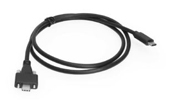

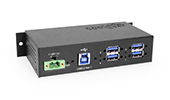
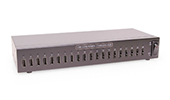
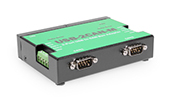
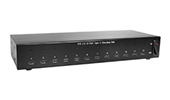
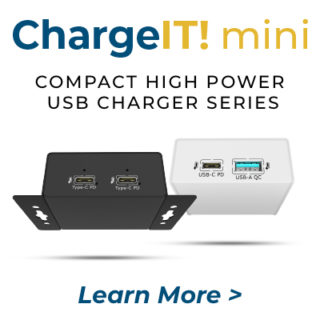
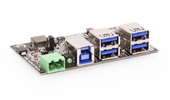
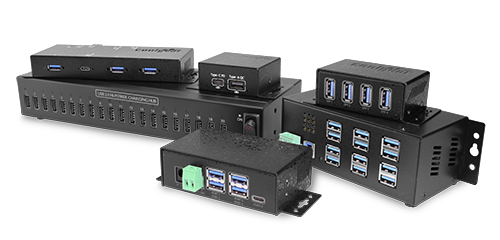
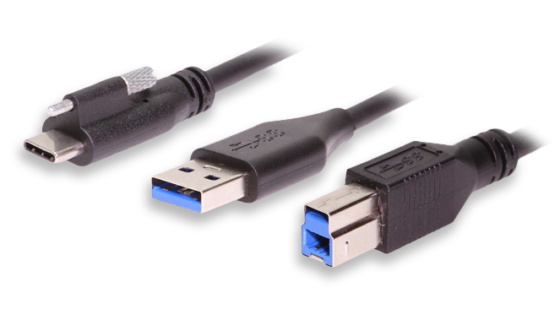
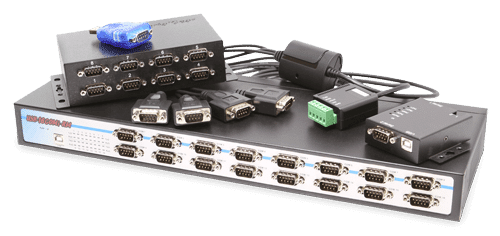
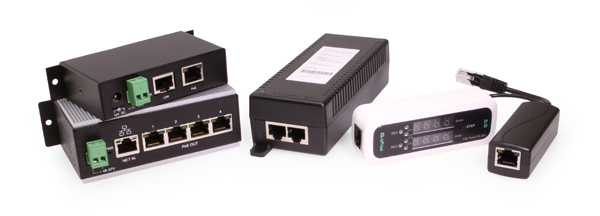
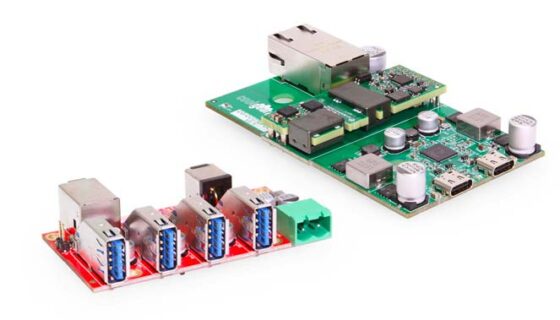







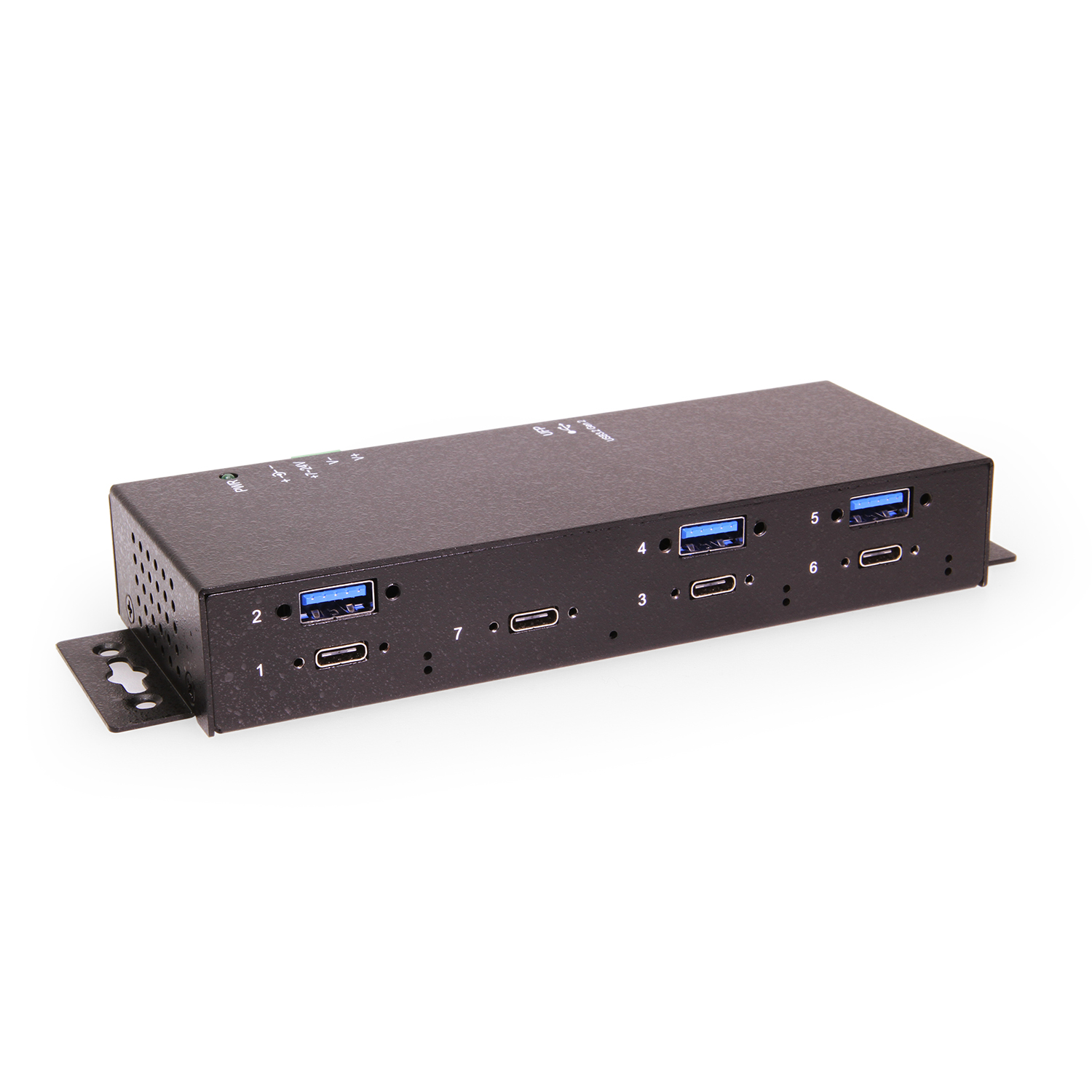
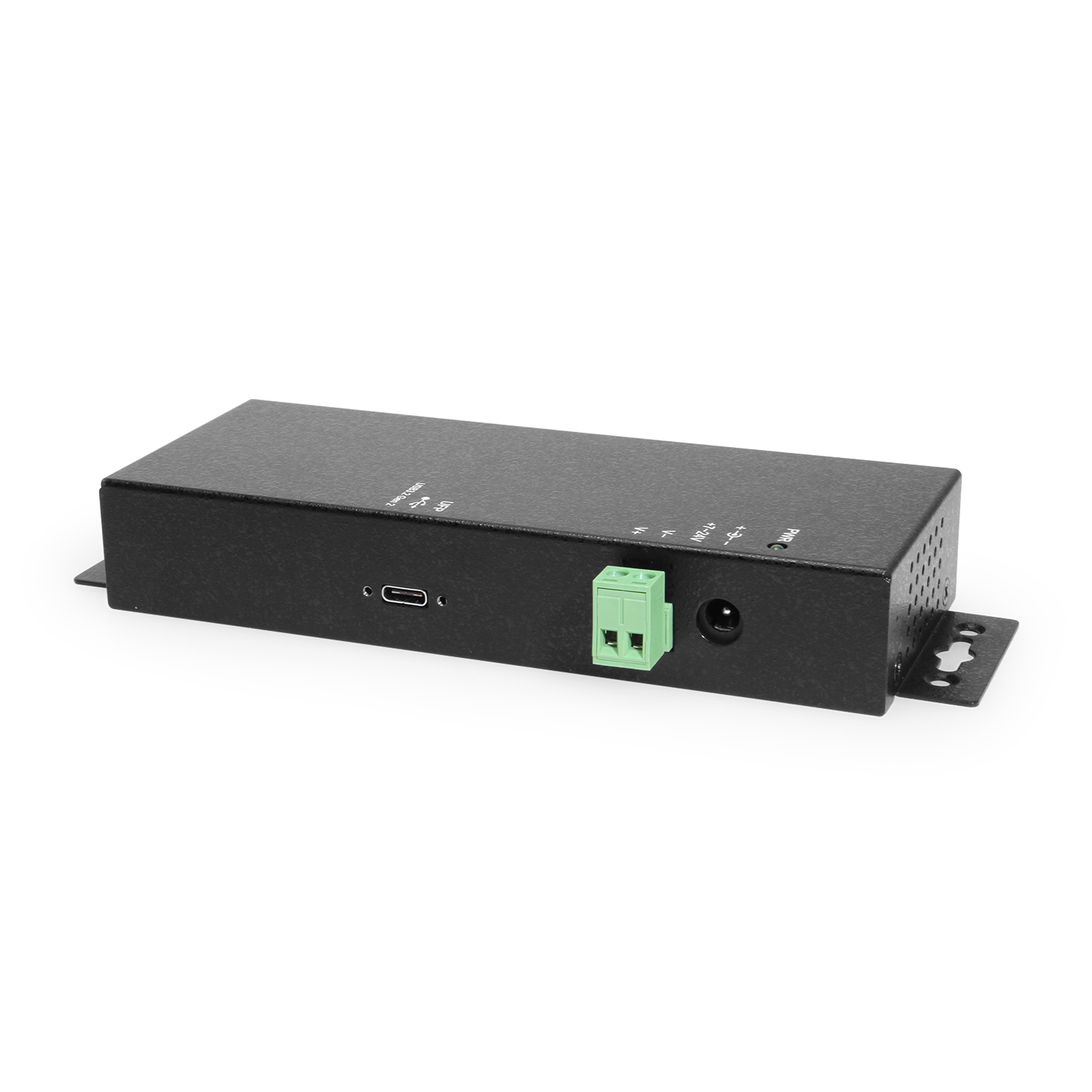
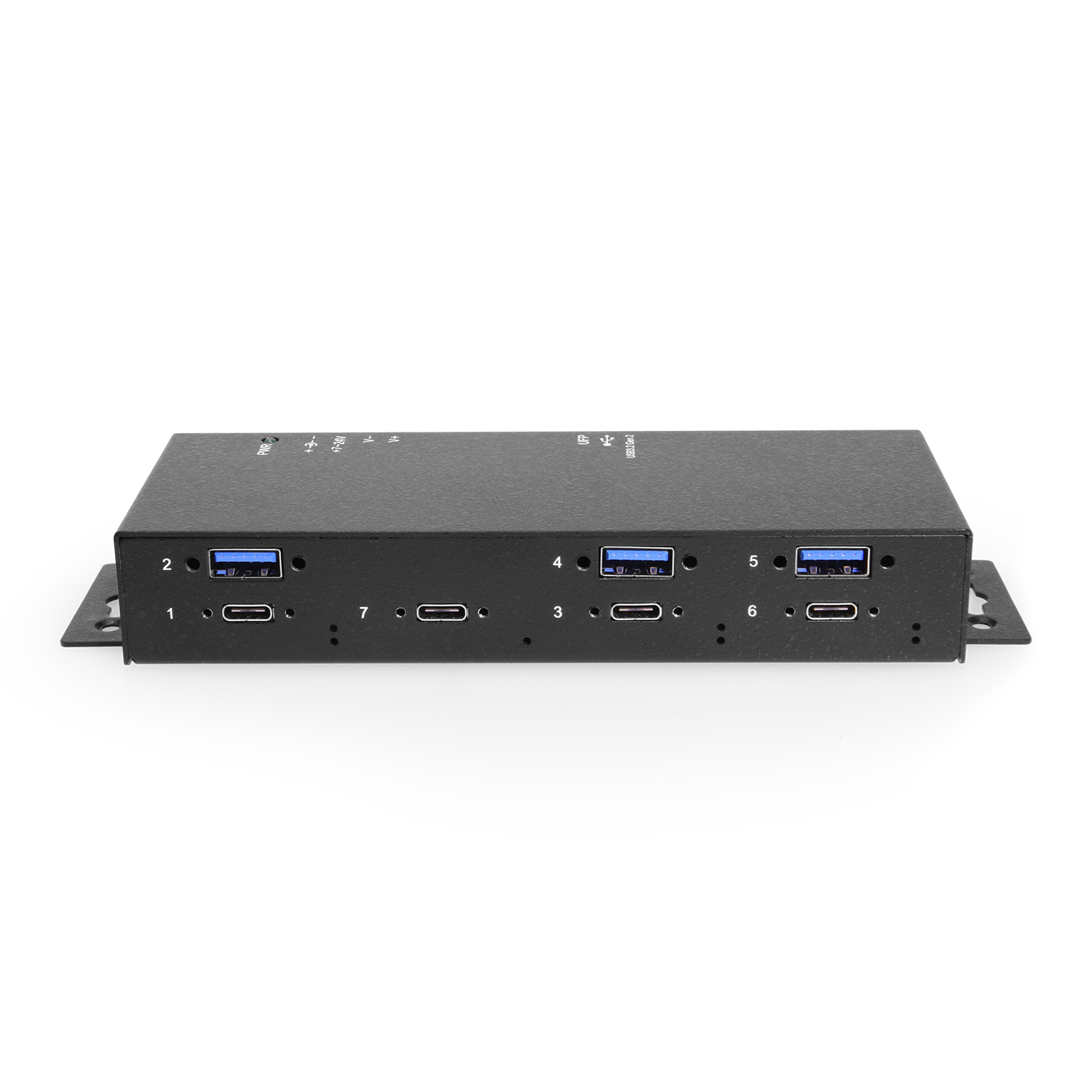
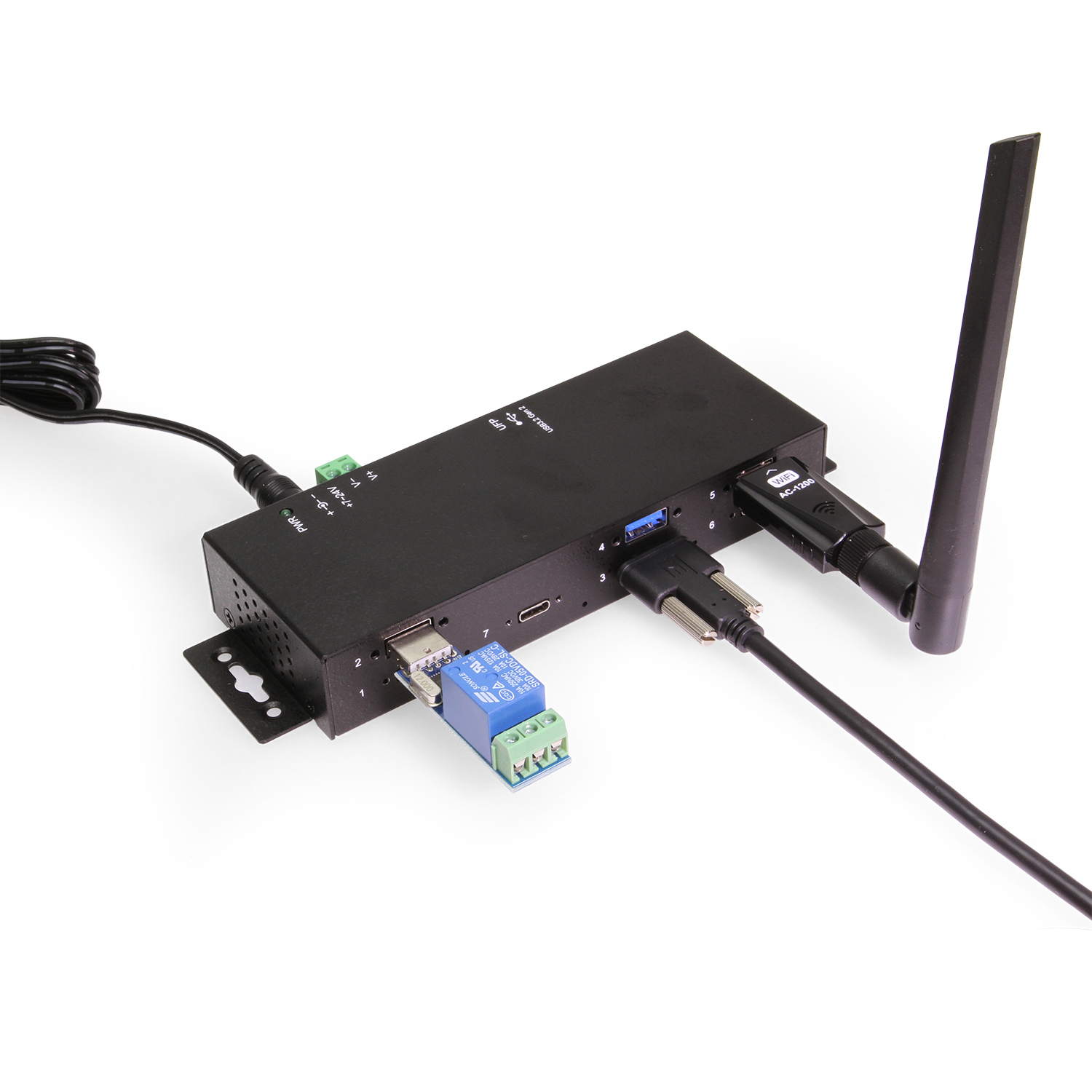
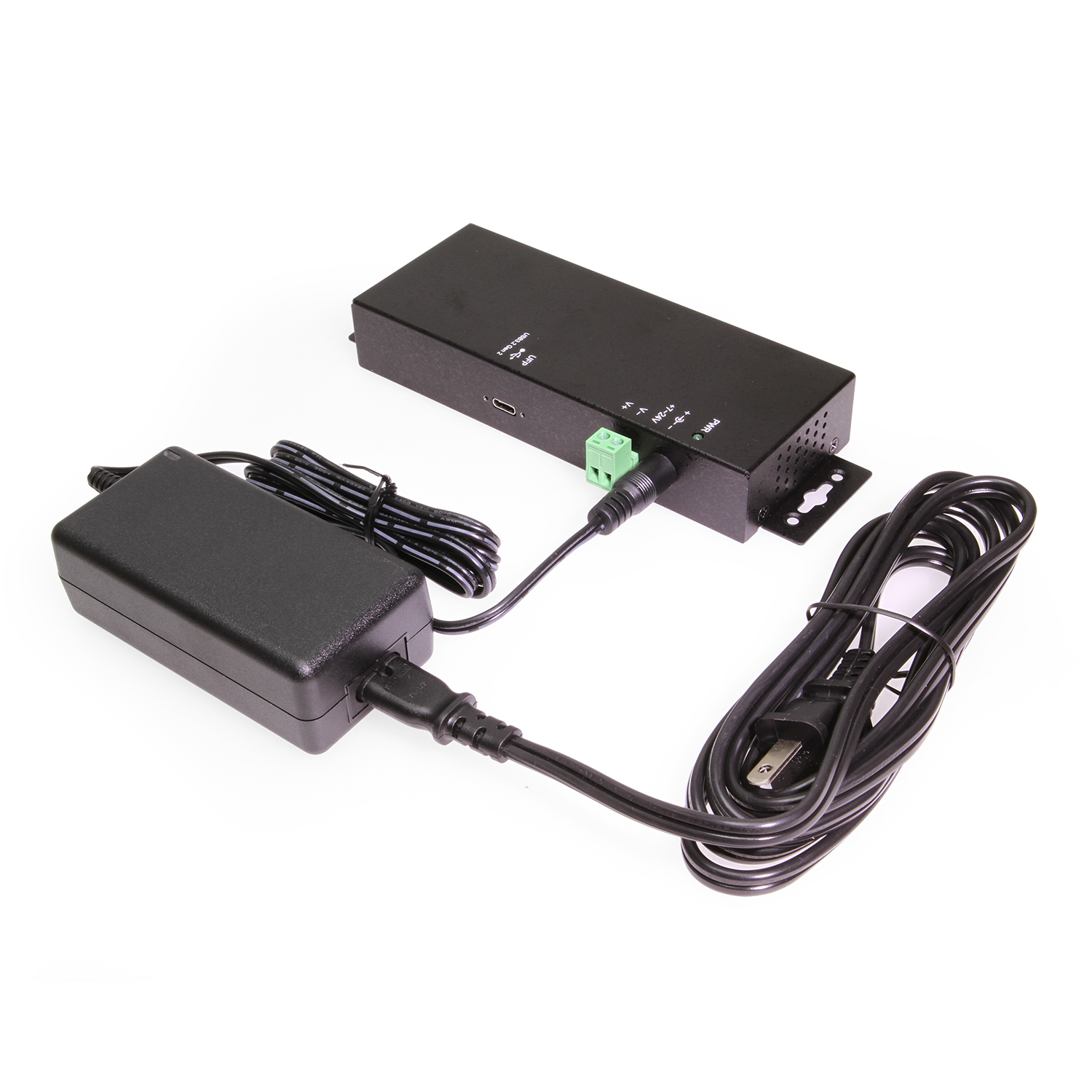
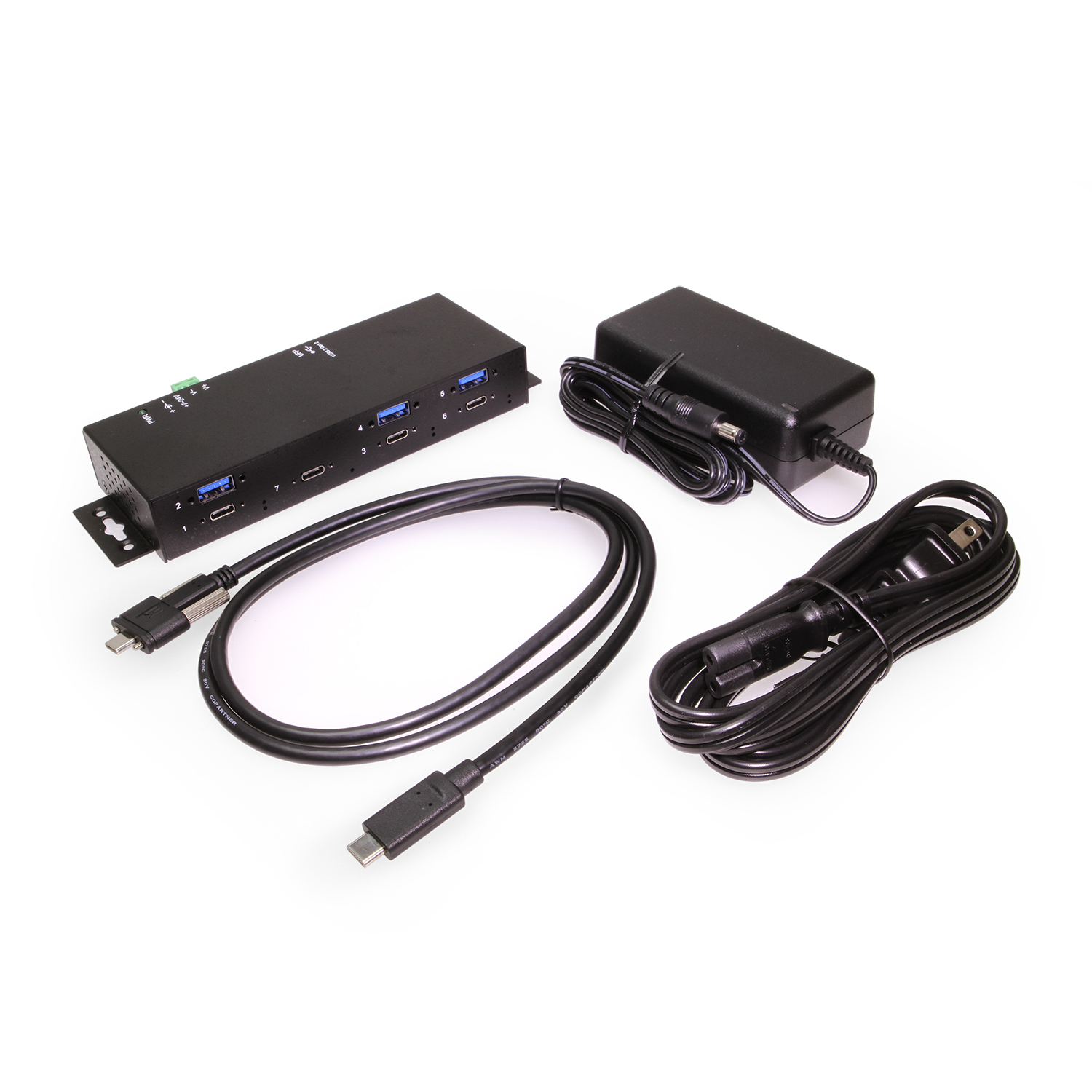
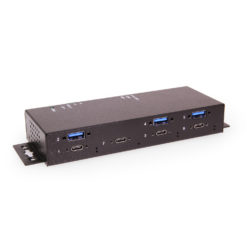
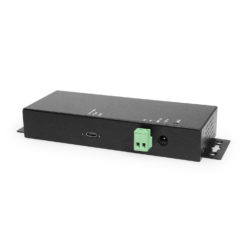
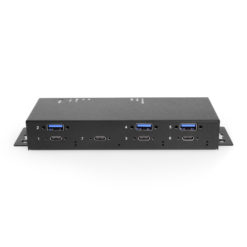
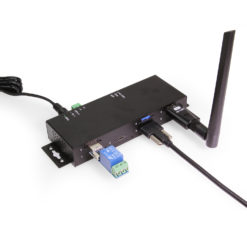
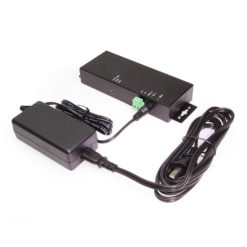
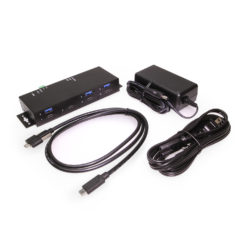




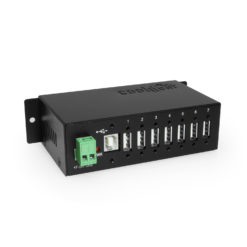
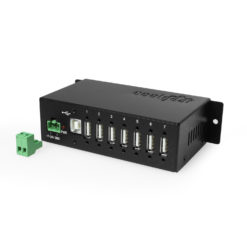
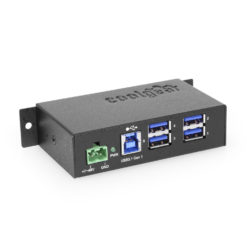
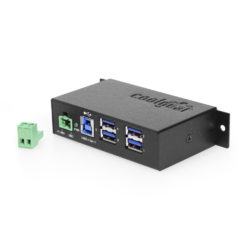
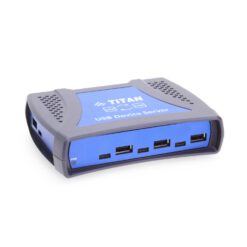
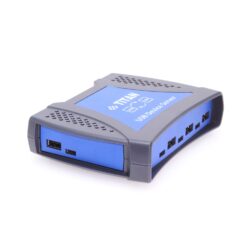
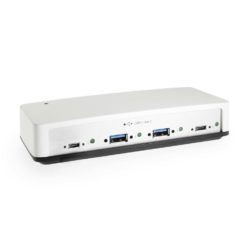
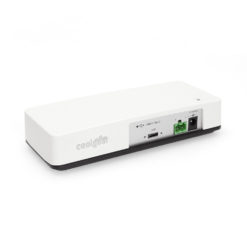
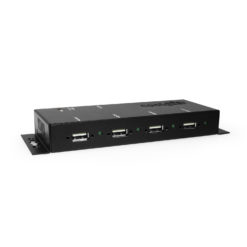
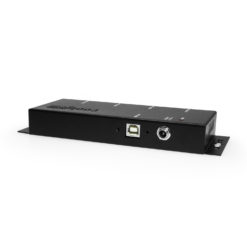
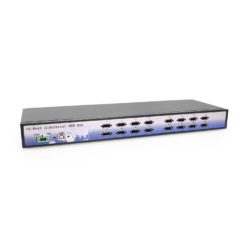
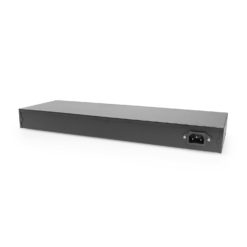
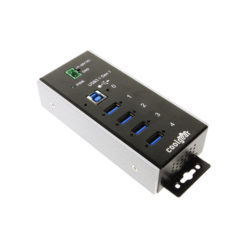
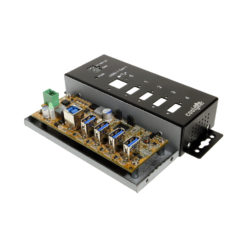
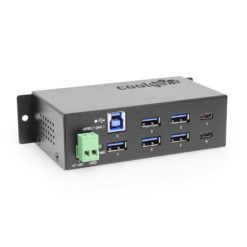
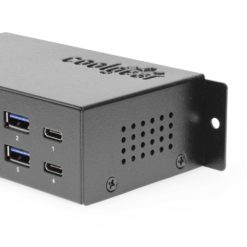
Reviews
There are no reviews yet.